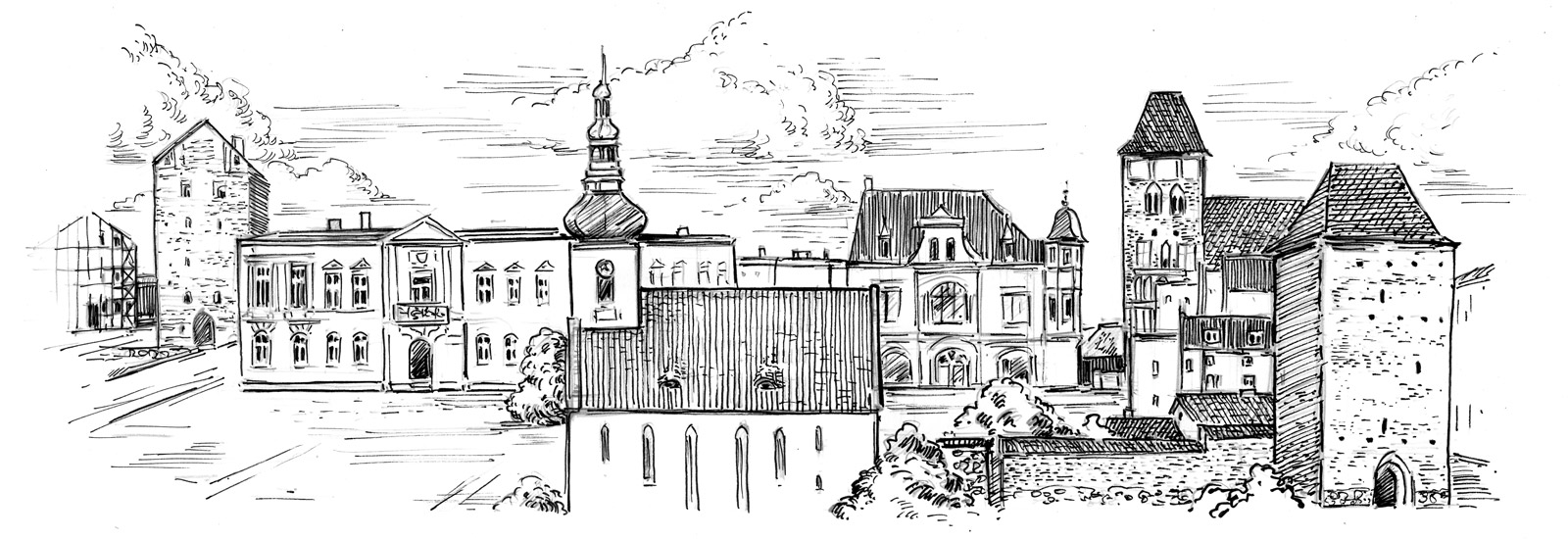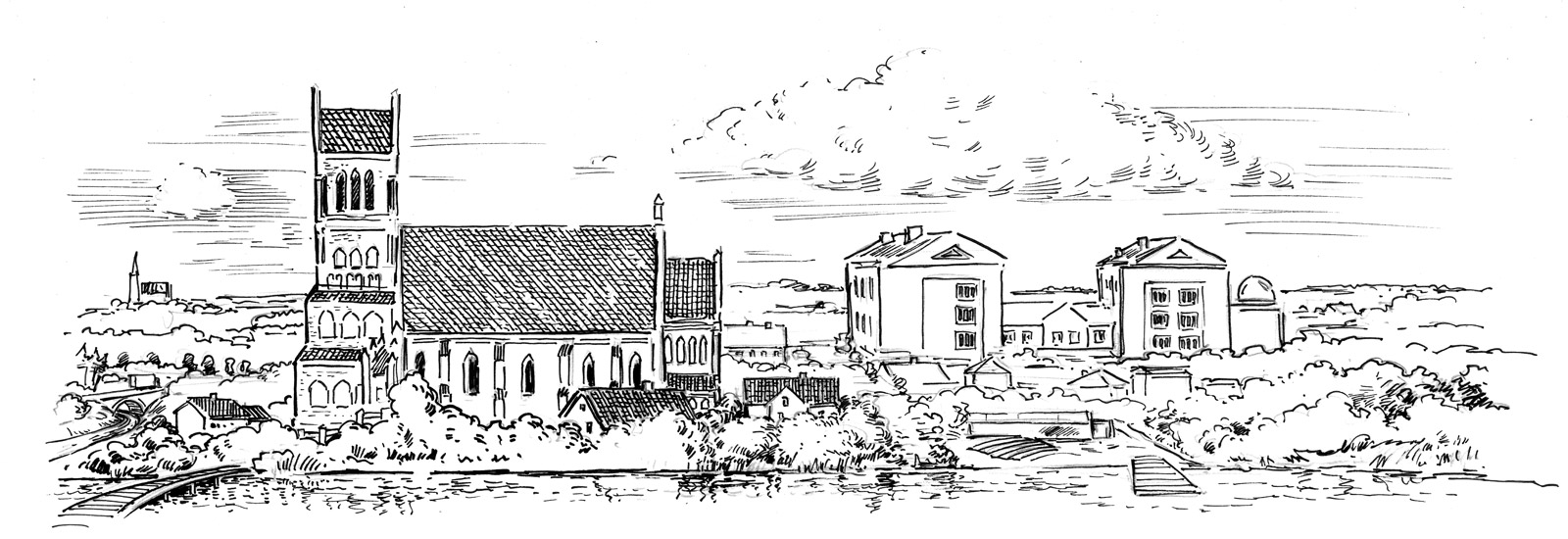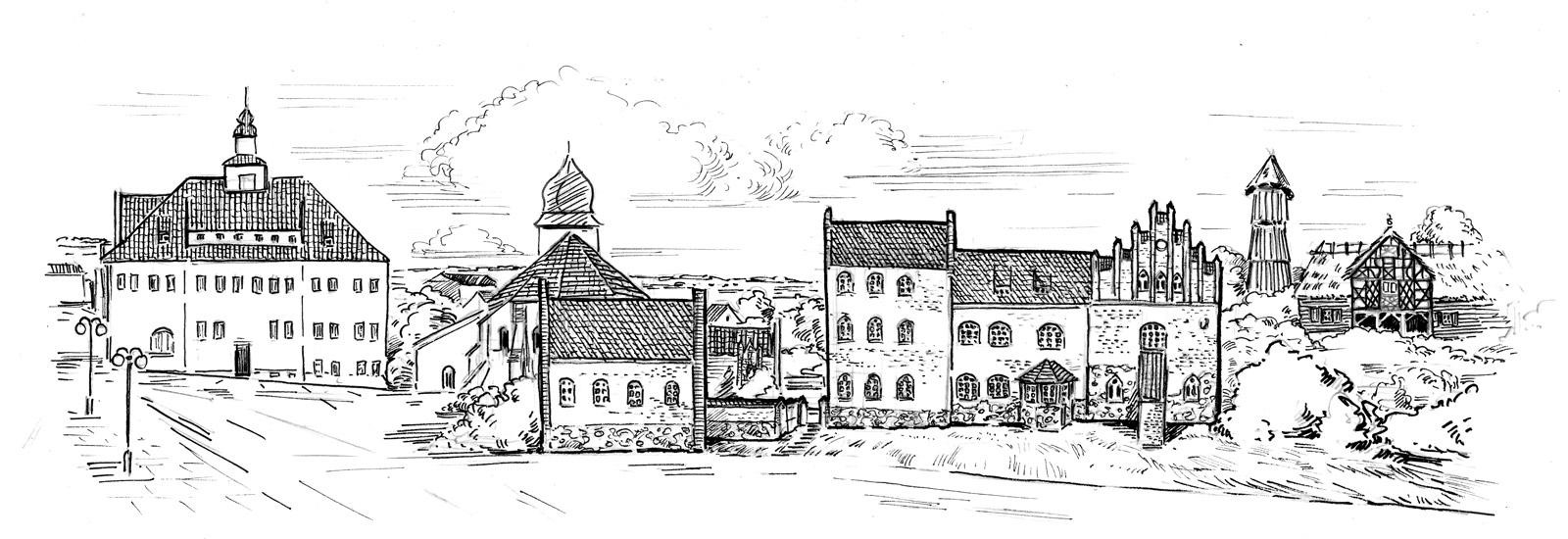The Copernicus Trail in Warmia and Mazury
The road tourist trail commemorates the figure of Nicolaus Copernicus (1473-1543) and his connections with the region. It has nearly 300 km and runs through towns related to the life and activity of the great scholar. It is marked with the astrolabe symbol.
During his 40-year stay in Warmia, Copernicus served various functions in the service of the Bishop of Warmia and the Warmian Chapter. Due to this, he lived in several places, also traveled a lot, visiting towns and villages of the episcopate. Among others as an inspector and MP. At the end of each year of his office, he visited capitular estates, inspected them, collected rents and settled disputes. In Warmia, he also visited episcopal estates located off the trail, including: Reszel, Jeziorany and Barczewo (e.g. during a tour with Bishop Jan Dantiscus in August 1538). His travels also reached beyond the borders of historical Warmia - to Elbląg, Bartoszyce, Lubawa, Malbork, Grudziądz, Toruń, Königsberg, Vilnius, Poznań, and Kraków.
Regardless of these offices, Copernicus conducted astronomical research, which secured him a place in the pantheon of the greatest scientists of all time. The heliocentric theory of the construction and functioning of the solar system formulated and proved by him has become one of the foundations of modern science.
On the Copernicus Trail, you can visit historic buildings remembering the times of the great scholar, museum exhibitions dedicated to him, learn the secrets of the universe in planetariums, and even conduct astronomical observations. In the region which is rich in tourist attractions, there are also many other places and facilities worth visiting. Amateurs of active leisure will also find many offers for themselves.
In the south of the border of the Warmian-Masurian Voivodeship, the trail leads through Nowe Miasto Lubawskie. Another town on the trail is Lubawa, which Copernicus visited twice in 1539. It was there that he decided to publish his famous book "On Revolutions", proving the truth of the heliocentric theory. Near Lubawa, there is an Astronomical Observatory in Truszczyny.
Further on, the trail runs near the battlefield of Grunwald from 1410, where its great stagings are organized annually. Through Olsztynek and Stawiguda, it leads to Olsztyn, where Copernicus in the years 1516-1519 and 1520-1521 was the administrator of the assets of the Warmian Chapter. This function was associated with, among others, settling these assets with new settlers, therefore Copernicus visited 43 villages. In Olsztyn he lived in a castle, where the Museum of Warmia and Mazury currently operates, presenting, among others, scholars' memorabilia. On the wall of the cloister of the building, the original astronomical table made by Copernicus himself, has been preserved. If you are interested in astronomy visit the planetarium and observatory in Olsztyn, where you will get the opportunity to look at the sky.
The trails runs through Dywity and Dobre Miasto and finally reaches Lidzbark Warmiński. Here, in the years 1503-1510, Copernicus was the secretary and doctor of the Warmian bishop Łukasz Watzenrode, who was his uncle. He lived in the castle with him. Now in this place there is the Warmian Museum. In the museaum you can find exhibits related to Copernicus. The next stages of the trail lead through Orneta, Pieniężno and Braniewo. Copernicus visited these cities many times, performing official duties. There are still buildings which Copernicus has surely seen with his own eyes and in which he has undoubtedly been.
From Braniewo, the trail leads to Frombork on the Vistula Lagoon, where the astronomer lived and worked for nearly 30 years. It was here that he conducted research and explored the sky and wrote his most famous work "On Revolutions." He is associated with the fortified Cathedral Hill with the Gothic archcathedral, in which his remains were buried (after examination re-buried in 2010). In other buildings of the complex there is the Nicolaus Copernicus Museum which is dedicated to him, and within the museaum there is also a planetarium. Near the town there is also a museum observatory called Astronomical Park.
Further on, the trail leads along the Vistula Lagoon through Tolkmicko and Kadyny (a complex of the imperial village with a palace from the 17th century) to Elbląg. Copernicus visited the latter towns many times, both accompanying his uncle who was a bishop (in 1504- 1507) and representing the interests of the Warmian Chapter (1529-1530). The town has numerous architectural monuments which were there at the time when Copernicus visited Elbląg.



